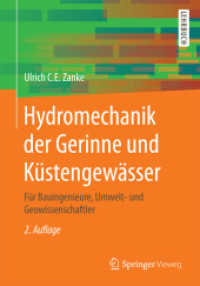Full Description
"The strategies in Write for Mathematics helped my math students to not only write about mathematics but also to think about mathematics."
-Lynda Ann DeLuca, Teacher and Math Coach
Ann G. McGuinness Intermediate School, Endicott, NY
"The integration of writing and mathematics is powerful instruction. This book provides ready-to-use strategies that will result in effective math instruction, and, more importantly, students will enjoy math class again. This is an outstanding resource."
-Natalie R. Scavone, New Visions Teacher Education Preparation Instructor
Cayuga-Onondaga Board of Cooperative Educational Services, NY
Foster mathematical thinking and understanding by incorporating writing into your math instruction
Research shows that engaging students in writing about mathematics can improve a learner's overall math understanding. Addressing NCTM standards, Write for Mathematics, Second Edition, offers a wide range of practical writing strategies that can be used with students to deepen their understanding of key mathematical concepts.
The process of incorporating writing into mathematics instruction need not seem daunting. This step-by-step handbook provides:
Ten specific writing strategies that foster mathematical thinking and understanding
Clear directions for using each strategy with students
Application of the strategies to target NCTM standards
A wide variety of examples at all levels
Strategies that can be used with any mathematics curriculum
A generous collection of reproducibles
Students who write about mathematics develop deeper understandings, show increased interest in math, and reach higher achievement levels! Write for Mathematics, Second Edition, is an important resource for teachers who want to reach these goals.
Contents
Preface
Acknowledgments
About the Authors
1. Writing and Mathematics: An Introduction
2. Taxonomies: The Words and Symbols of Mathematics
3. Composing With Keywords: Mathematical Word Play
4. Metacognition for Mathematical Thinking
5. Defining Format for Mathematical Clarity
6. Morphology and Etymology for Expanding Mathematical Vocabulary
7. Profiles and Frames for Organizing Mathematical Information
8. Reasons, Procedures, and Results to Explain Mathematical Ideas and Concepts
9. Who's Who in Mathematics for Biographies and Careers Related to Mathematics
10. Where in the World for Relating Geography to Mathematics
11. Personifications and Interactions for Knowledge and Humor
12. Mathematically Literate: Knowing, Applying, and Communicating Mathematics
Resource A: Rubrics for Writing for Mathematics
Resource B: Reproducible Templates for Students
Bibliography
Index








